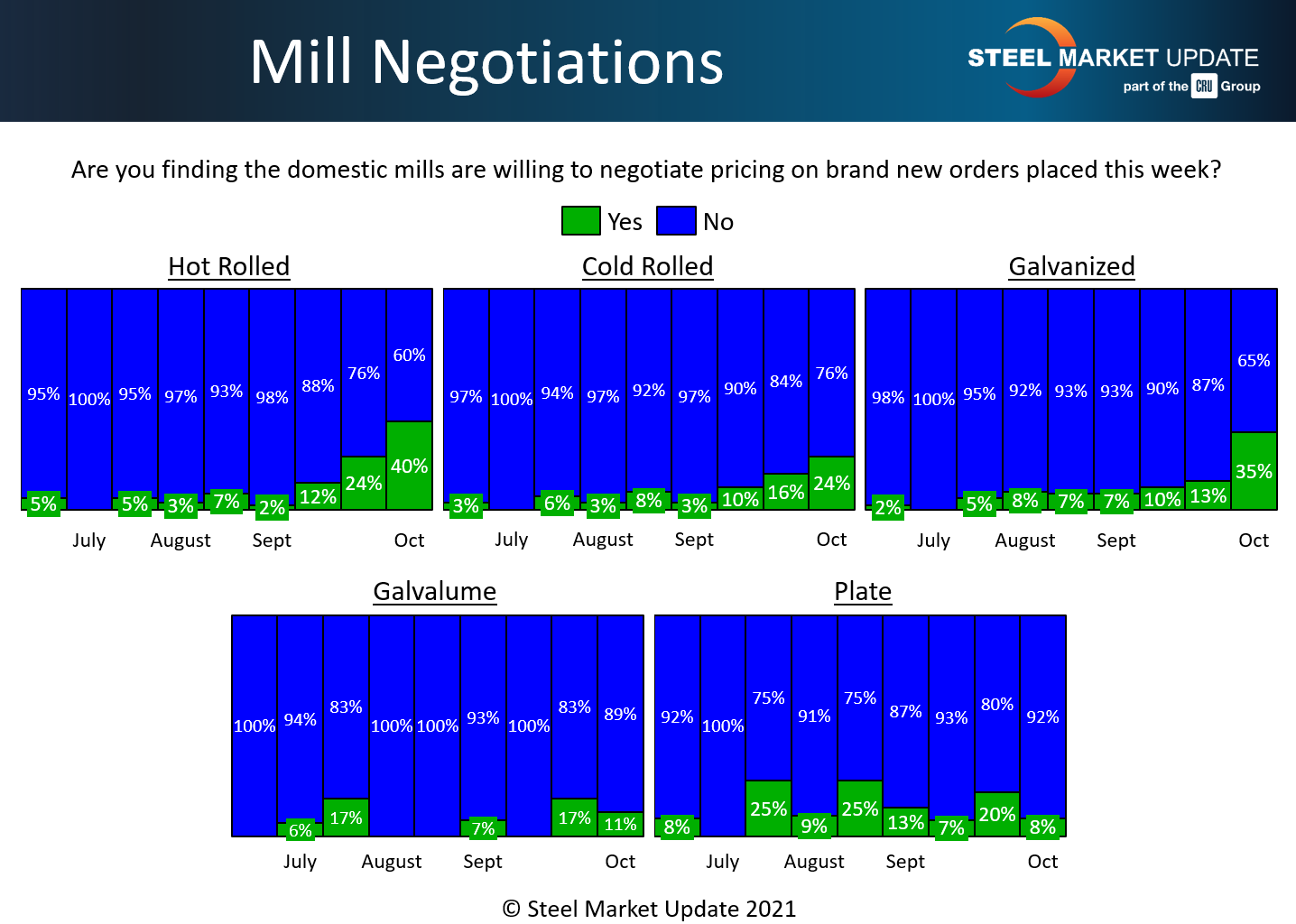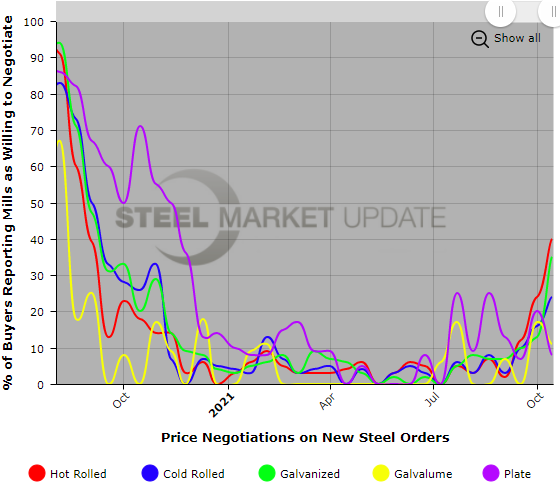SMU Data and Models

Steel Mill Negotiations: More Buyers Pushing Back
Written by Tim Triplett
October 14, 2021
Since this time last year, mills have been in the driver’s seat when it comes to steel price negotiations. With demand exceeding supplies – and with buyers more concerned about finding steel than what they had to pay for it – mills have basically been able to steer prices wherever they wanted. That appears to be changing, though, as the latest Steel Market Update negotiations data suggests buyers are no longer just along for the ride.
SMU asks buyers every two weeks if mills are willing to talk price on spot orders. Around 40% of hot rolled buyers responding to this week’s survey said mills are now open to negotiating – which is a big shift. As recently as the first week of September, just 2% had reported mills willing to negotiate.
The change in the tone of price talks is similar in other product categories: About 35% of galvanized buyers and 24% of cold rolled buyers now report some wiggle room in price negotiations. Talks are still very tight in Galvalume and plate, however, report survey respondents.
Mills clearly still have the dominant bargaining position, but it appears to be weakening a bit as competition from imports increases, lead times shorten and prices begin to moderate.


By Tim Triplett, Tim@SteelMarketUpdate.com

Tim Triplett
Read more from Tim TriplettLatest in SMU Data and Models

SMU Survey: Buyers’ Sentiment rebounds from multi-year low
Both of SMU’s Steel Buyers’ Sentiment Indices edged higher this week. Current Sentiment rebounded from a near five-year low, while Future Sentiment rose to a two-month high

SMU flat-rolled market survey results now available
SMU’s latest steel buyers market survey results are now available on our website to all premium members.

SMU Survey: Sheet lead times pull back after early-June blip, plate holds
Following the uptick seen two weeks ago, lead times eased this week for all four sheet products tracked by SMU, while plate lead times held steady, according to this week’s market survey.

SMU Survey: Pricing power abruptly shifts to steel buyers
The majority of steel buyers responding to our latest market survey say domestic mills are more willing to talk price on sheet and plate products than they were earlier this month. Sheet negotiation rates rebounded across the board compared to early June, while our plate negotiation rate hit a full 100%.

Service centers: Mill orders down marginally in May
SMU’s Mill Order Index (MOI) declined for a third straight month in May, but only marginally.
